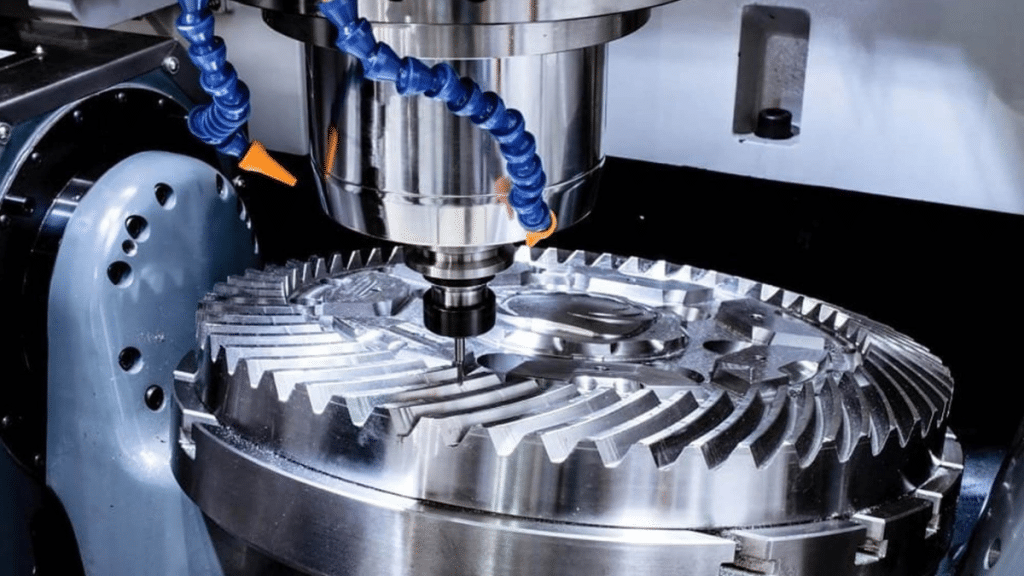In the fast-paced world of precision manufacturing, every component counts. From automotive engines to aerospace turbines and medical implants, CNC-machined parts face intense demands for durability, efficiency, and reliability. Enter Diamond-Like Carbon (DLC) coatings—a revolutionary solution that combines diamond-like hardness with graphite-like lubricity to transform component performance. In this article, we explore how DLC coatings work, their benefits, and why industries are turning to this advanced technology to stay ahead.
What Are DLC Coatings?
DLC coatings are thin-film carbon-based layers applied to substrates like steel, titanium, or ceramics using advanced techniques such as Physical Vapor Deposition (PVD) or Plasma-Assisted Chemical Vapor Deposition (PACVD). These coatings mimic the properties of natural diamond, offering exceptional hardness (15-30 GPa or 2000-5000 HV), low friction coefficients (0.1-0.25 dry, <0.1 lubricated), and excellent chemical inertness. With thicknesses ranging from 1-5 microns and deposition temperatures as low as 170-200°C, DLC coatings are versatile enough for a wide range of applications without compromising substrate integrity.
Why DLC Coatings Outshine Traditional Alternatives
Compared to traditional coatings like Titanium Nitride (TiN) or Chromium Nitride (CrN), DLC coatings offer superior performance in key areas:
| Coating | Hardness (HV) | Coefficient of Friction | Max Temperature |
| DLC | 2000-5000 | 0.1-0.25 | 350°C |
| TiN | 2300 | 0.4-0.6 | 600°C |
| CrN | 1800 | 0.3-0.5 | 700°C |
DLC’s friction coefficient is 200-500% lower than TiN and CrN, making it ideal for applications requiring minimal wear and smooth operation, such as sliding components or cutting tools. While TiN and CrN excel in high-temperature environments, DLC’s low-temperature deposition process makes it compatible with sensitive substrates like certain steels or titanium alloys, broadening its appeal.
Real-World Applications of DLC Coatings
DLC coatings are transforming industries by enhancing the performance of critical CNC components:
- Automotive: Piston rings, gears, and valve train components benefit from DLC’s low friction and wear resistance, reducing fuel consumption and extending part life.
- Aerospace: Cutting tools and turbine blades coated with DLC withstand extreme conditions, improving efficiency and reducing maintenance costs.
- Medical: DLC’s biocompatibility (compliant with ISO 10993) makes it perfect for surgical tools and implants, ensuring durability and safety in sensitive applications.
- Industrial Manufacturing: Molds and dies coated with DLC achieve higher precision and longer service life, boosting production efficiency.
Case Study: Skyrocketing Tool Life in Aerospace
A leading aerospace manufacturer faced frequent downtime due to wear on carbide cutting tools used in CNC machining. By applying a tailored DLC coating with a chromium nitride underlayer, the tools achieved a 200% increase in lifespan, producing 2,000 parts without failure compared to 600 with uncoated tools. This translated to significant cost savings and reduced production delays, showcasing DLC’s transformative potential.
The DLC Coating Process: Precision and Customization
Applying DLC coatings requires precision and expertise. The process typically involves:
- Surface Preparation: Substrates are cleaned via ultrasonic methods or blasting to ensure optimal adhesion.
- Underlayer Application: Materials like chromium or titanium are applied to enhance bonding between the substrate and DLC layer.
- Coating Deposition: Using PVD or PACVD, a thin DLC layer (1-5 microns) is applied at low temperatures (170-200°C) to preserve substrate properties.
- Customization: Coatings can be tailored (e.g., hydrogenated a-C:H for flexibility or hydrogen-free ta-C for maximum hardness) to meet specific needs, with optional doping (e.g., silicon, nitrogen) for enhanced lubricity or biocompatibility.
This meticulous process ensures that DLC coatings deliver consistent, high-quality results, whether for high-load automotive parts or delicate medical devices.
Why Choose DLC Coatings?
- Unmatched Durability: Hardness up to 5000 HV ensures components withstand extreme wear.
- Reduced Friction: A friction coefficient as low as 0.1 minimizes energy loss and heat generation.
- Versatility: Compatible with steel, titanium, carbide, and select ceramics, with low-temperature deposition for sensitive materials.
- Regulatory Compliance: FDA-compliant for food-contact applications (EC 1935/2004) and biocompatible for medical uses (ISO 10993).
Partnering with Experts for Optimal Results
To fully leverage DLC coatings, partnering with a provider that combines coating expertise with CNC machining know-how is critical. At Mekalite, we offer ISO 9001-certified DLC coating services tailored to your specific components. Our team customizes coatings to match your application, delivers in as little as 2-4 weeks, and supports small-batch orders with no minimum quantities. Whether you’re enhancing engine parts or medical implants, our solutions drive performance and efficiency.
Ready to Transform Your Components?
DLC coatings are more than a surface treatment—they’re a competitive edge. By reducing wear, improving efficiency, and extending component life, DLC coatings empower industries to achieve more. Curious about how DLC can benefit your next project? Visit Mekalite’s DLC Coating Service to learn more or request a custom quote today.
